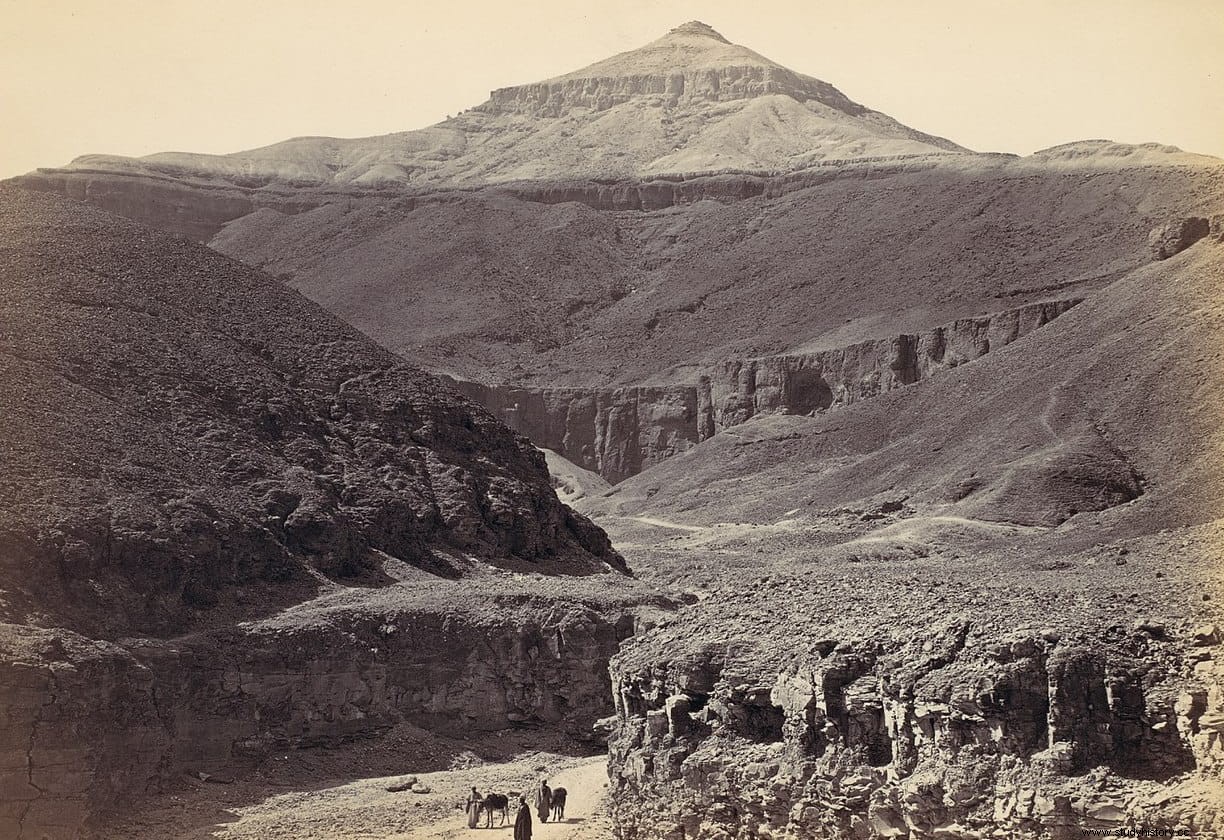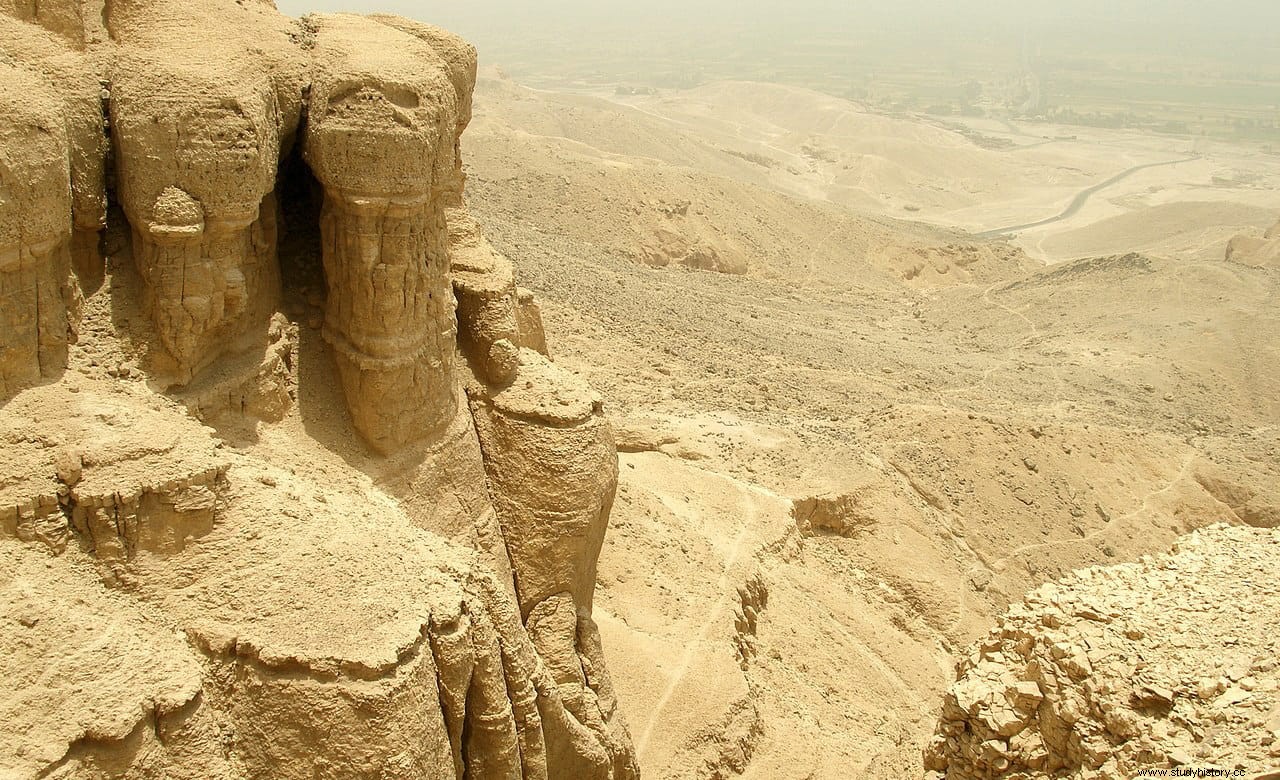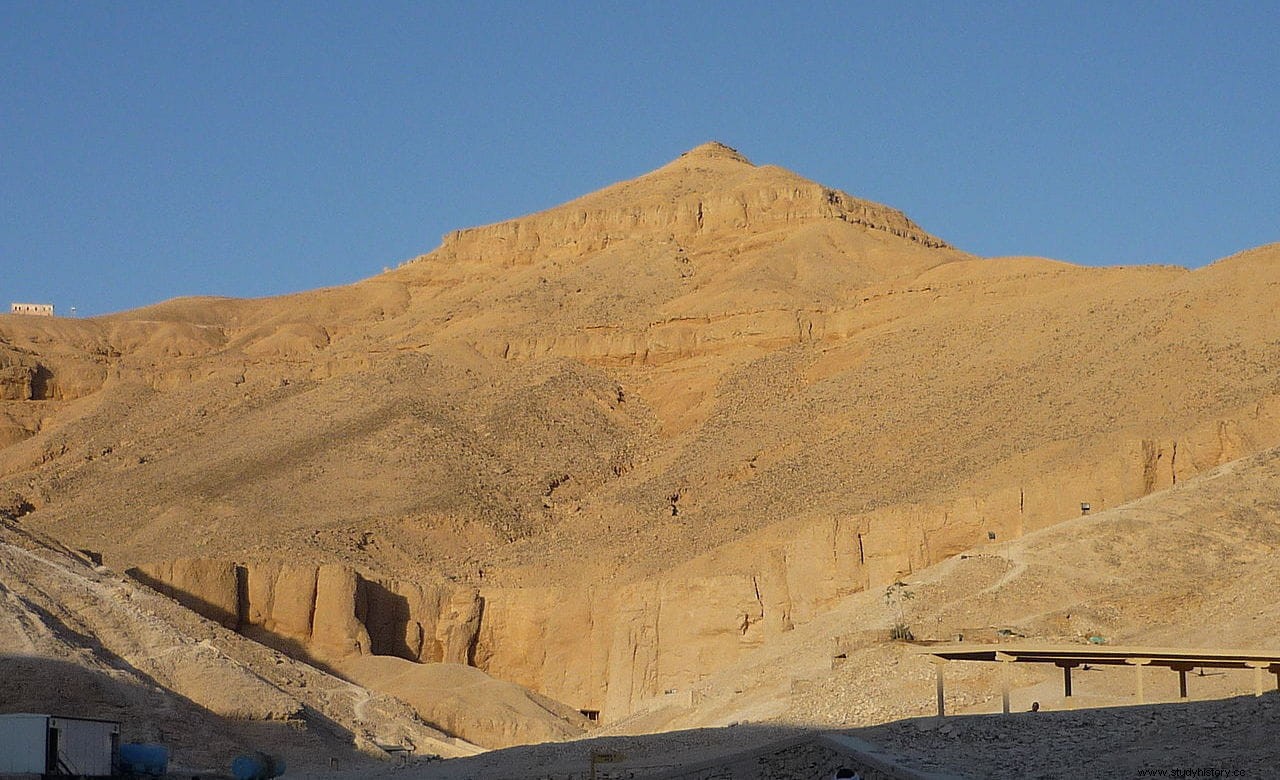Why did pharaohs of the 18th, 19th, and 20th dynasties choose to be buried in hypogea in the Valley of the Kings, rather than in pyramids like their predecessors? Why did you choose the place now known as the Valley of the Kings?
Some Egyptologists have a hypothesis in this regard:the presence of a sacred mountain in the shape of a natural pyramid, El-Qurn (the horn ), which the Egyptians called Ta Dehent (the beak ). It is 420 meters high and stands on the mountain range in front of ancient Thebes (now Luxor), on the west bank of the Nile.
The pyramidal shape is only appreciated when viewed from the entrance to the Valley of the Kings, and near the highest point there is a plate-shaped rock formation that protrudes a few meters from the side of the hill. Seen from the right angle it resembles the head of a cobra, and perhaps for this reason the area was associated with the cult of the goddess Hathor and the cobra goddess Meretseger.

El-Qurn is in a privileged situation, between the Valley of the Kings to the north, the Valley of the Queens to the south, the Valley of the Nobles to the west and the Deir el-Bahari temple complex. It is possible that its pyramidal appearance was what decided Tuthmosis I, the third pharaoh of the 18th dynasty (reigned between approximately 1504 and 1492 BC), to choose its environment for the foundation of the Theban royal necropolis, where he was buried together with many of his successors.
In the tomb of Thutmose I itself, decorated with scenes from the Egyptian Book of Amduat, the oval cavern of the god Socar is depicted under a pyramid, mimicking the physical position of the tomb (with its oval chamber) under the peak of el-Qurn.
Interestingly, although this tomb of Tuthmosis I has been identified as KV38 and a yellow quartzite sarcophagus bearing his name was found in it, it appears that the body was moved by Tuthmosis III to tomb KV20 of Hatshepsut (daughter of Tuthmosis I), which it also contains a sarcophagus bearing the name of Thutmose I.

Kent R. Weeks believes that the pyramidal shape of el-Qurn may have reminded the Egyptians of the emblem of the sun god Ra and prompted them to establish the burial ground of the rulers in this valley . Thus, the peak would have been interpreted as a kind of collective natural pyramid, marking the solar symbolism that for many centuries had played a fundamental role in the religious role of royal necropolises .
In favor of this interpretation is the fact that the burial places of the kings are on the north side, and those of the queens on the south side, exactly as in the pyramids. In addition, other later pharaohs would also use similar symbolic landmarks. For example, Akhenaten had his new capital built with his own necropolis, on top of a rock formation that resembled the ancient hieroglyphic sign for horizon .

On the contrary, some researchers such as John Coleman Darnell and Colleen Manassa Darnell are of the opinion that the view of el-Qurn as a natural pyramid is a modern comparison, for which no ancient evidence can be adduced .
El-Qurn can be ascended on foot from two directions, starting the climb in the Valley of the Kings or near Deir el-Medina. The journey to the top takes about an hour and a half. Normally, the route from Deir el-Medina is chosen, since three quarters of the route runs on concrete stairs, although the final ascent is more complicated. It is the path followed by the workers who built the tombs in the Valley of the Kings. However, it seems that access is restricted today.
